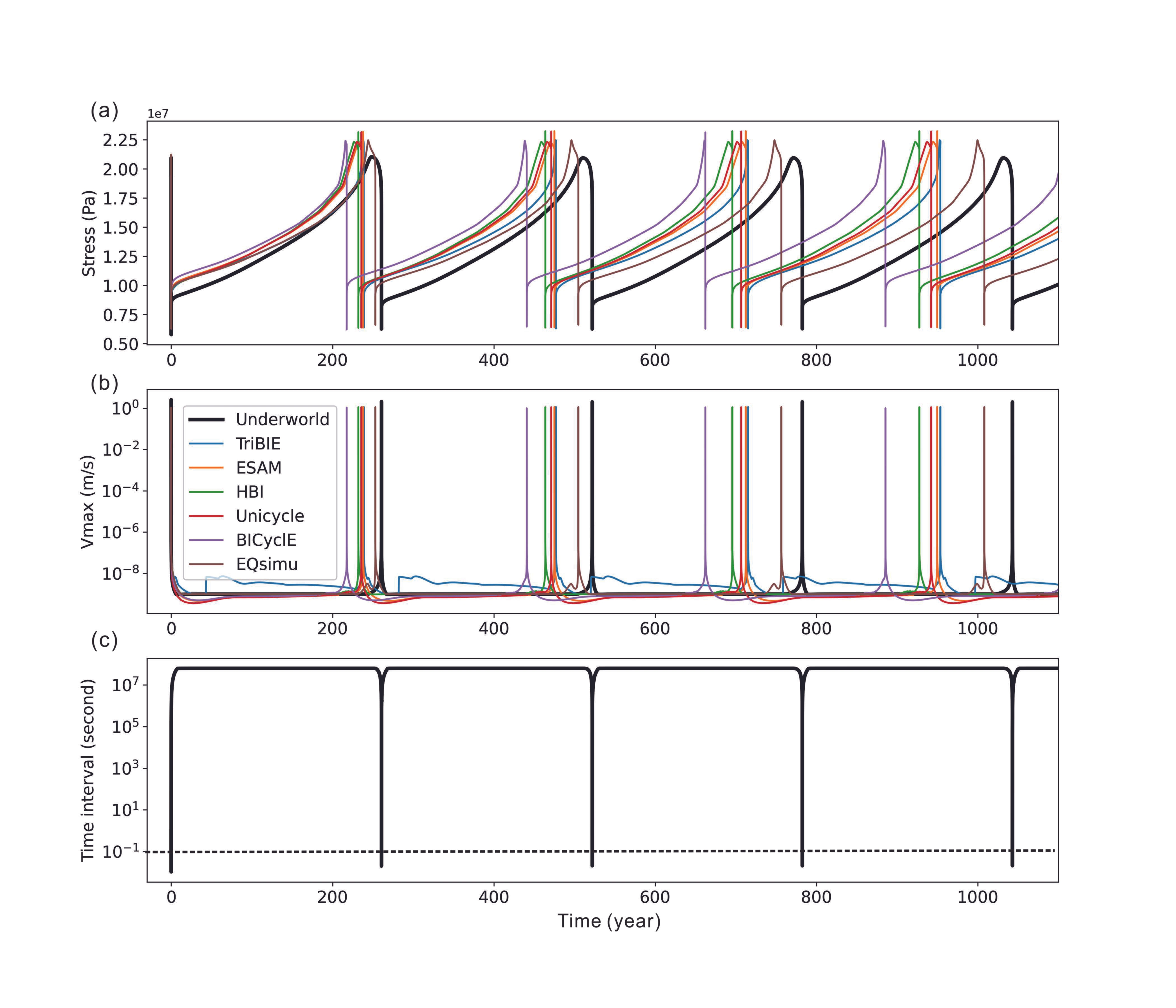Numerical Modeling of Earthquake Cycles Based On Navier-Stokes Equations With Viscoelastic-Plasticity Rheology
Created by: Haibin YangLouis-Noel MoresiHuihui WengJulian Giordani
- Snapshot
- Science overview
- Software and setup
- Code & data availability
- Metadata
Plain language summary
The numerical modeling method for long-term tectonic deformations averages out the co-seismic fault displacement into thousands to tens of thousands of years, and neglects near-fault damages of earthquakes; therefore, it may not be able to decipher fault activities in detail. Software simulating earthquake rupture dynamics may not have a good estimation of background stress due to longterm tectonic deformations. In this study, we develop a numerical framework that embeds earthquake rupture dynamics into a long-term tectonic deformation model by adding inertial terms and using highly adaptive time-stepping that can capture deformation at plate-motion rates as well as individual earthquakes. The inertia term, which is neglected in long-term large-scale modeling methods, is considered to simulate the dynamic rupture processes. The rate-and-state frictional relationship for co-seismic fault slip is implemented in viscoelastic-plastic earth. Benchmarks of viscous flow, viscoelastic wave propagation and earthquake cycle simulations are tested. Based on these benchmarks, we undertake a generic study of a thrust fault in crust. We find that lower crustal rheology affects the periodic time of characteristic large earthquake cycles and the inter-seismic free surface movement. Cratons with a relatively strong lower crust due to lower temperature remain two peaks in surface uplift profiles around the fault zone for thousands of years after one characteristic earthquake, which help identify active faults in cratons.

Model submitted by Haibin Yang on August 16, 2024.